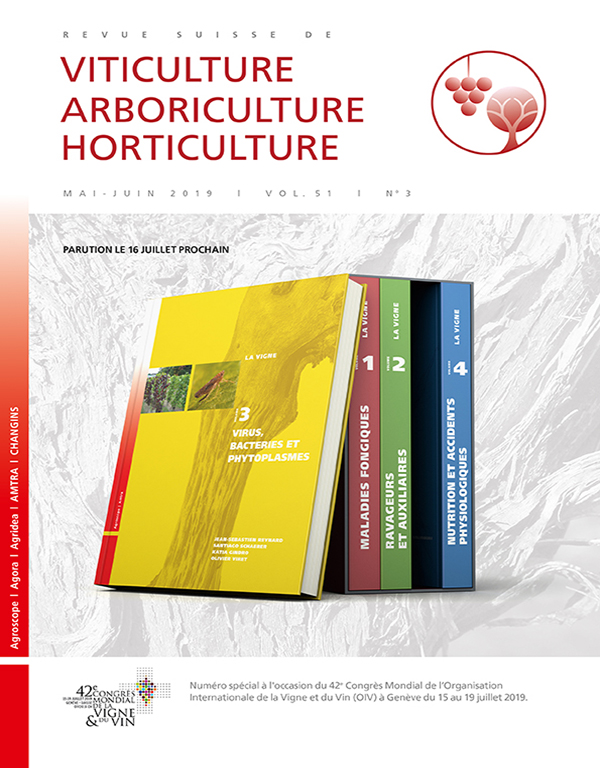
Issue 3 - May - June 2019

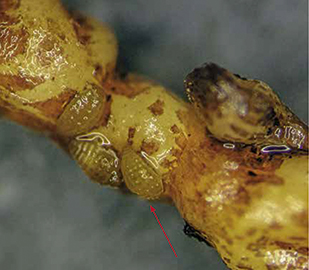
Abstract in open access
The great plant-health crisis of the late 19th century prompted Swiss political authorities to take measures to halt the loss of vineyard acreage. This led to the creation by the canton of Vaud of the first viticulture test facility in French-speaking Switzerland, in 1886 in the Lausanne district. Until the end of the 19th century, the activities of the Lausanne viticulture research station were closely linked to plant-health problems. Over the subsequent decades, research concerns expanded, cantonal research stations became federal research stations, and the number of sites increased. Since the 1970s, and thanks to Swiss agricultural research, the concept of integrated production has been expanding, thus ensuring the sustainability of viticulture through attention to environmental, economic and social factors.
Keywords:
E-Mail: olivier.viret@vd.ch
Adress: DGAV, 1110 Morges
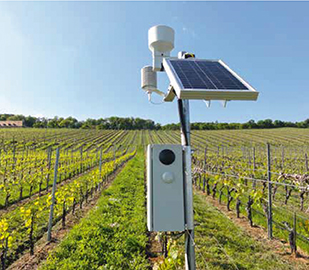
Abstract in open access
The collaboration of two research institutes – viz., Agroscope, and the State Institute of Viticulture and Oenology Freiburg in Breisgau, Germany – with GEOsens GmBH, a private German company specialising in the development of computer software, has yielded VitiMeteo forecasting models for the main vine fungal and pest diseases. These models are based on scientific knowledge of the biology of these organisms in relation to the determining meteorological factors. In Switzerland, these VitiMeteo models are incorporated in AGROMETEO, a platform which combines decision-making tools with information enabling better plant-protection management in agriculture.
Keywords:
E-Mail: pierre-henri.dubuis@agroscope.admin.ch
Adress: Agroscope, 1260 Changins/Nyon
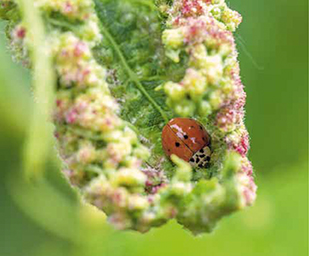
Abstract in open access
Integrated pest management is practiced on nearly the totality of the Swiss vineyard. It is founded on prophylactic measures as well as sustainable methods such as biological and biotechnical control. The use of selective products respecting beneficials as well as the deployment of mating disruption against the two grapevine moths allowed to restrict the application of insecticides to rare and punctual occasions. However, new challenges, such as the emergence of exotic pests, jeopardize this fragile natural equilibrium and science has to find novel sustainable solutions.
Keywords:
E-Mail: patrik.kehrli@agroscope.admin.ch
Adress: Agroscope, 1260 Changins/Nyon
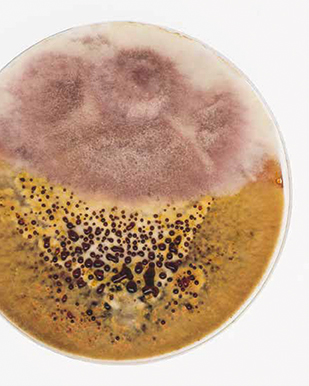
Abstract in open access
The exploration and discovery of natural fungicides, derived from plants or fungi, are an integral part of Agroscope's challenges. Several projects, initiated in 2006, are supported by external funding from private partnerships, government research funds and producer groups. However, the challenges facing this type of research are multiple: to offer products with sufficient efficacy maintained over an adequate period of time, a reasonable impact on the environment and a competitive cost price. This article provides an overview of the constraints and prospects for the development of alternative fungicides in viticulture.
Keywords:
E-Mail: katia.gindro@agroscope.admin.ch
Adress: Agroscope, 1260 Changins/Nyon
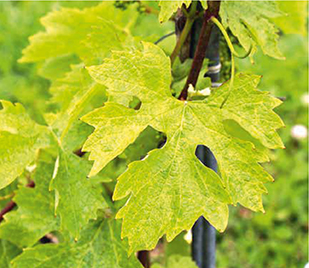
Abstract in open access
Viruses, bacteria and phytoplasmas cause diseases which we have no direct means of controlling in the vineyard. The fact is, we do not have any active curative substances without a negative impact on the vine, humans and the environment. Although only some of these diseases are transmissible from vine to vine by insect vectors, they can all be transmitted via the multiplication material (plant, graft, rootstock).
Owing to their hazardousness and contagiousness, certain diseases are regulated by law (ordinances on plant health and multiplication material) as part of compulsory control (quarantine) or selection (certification). Indeed, certain diseases transmitted by natural insect vectors or introduced into vineyards, such as flavescence dorée (phytoplasma), Pierce’s disease (bacterium), and certain leafroll diseases (virus), can be epidemic. The serious and irreversible consequences – both qualitative and quantitative – for harvests and the health of vineyards, are such as to jeopardise the sustainability of the latter. The only available means for curbing or, ideally, eradicating these diseases are prophylactic control methods. For this reason, symptomatology (recognition) and laboratory analyses (confirmation) play an essential role in the detection of these diseases.
Keywords:
E-Mail: sebastien.reynard@agroscope.admin.ch, santiago.schaerer@agroscope.admin.ch
Adress: Agroscope, 1260 Changins/Nyon
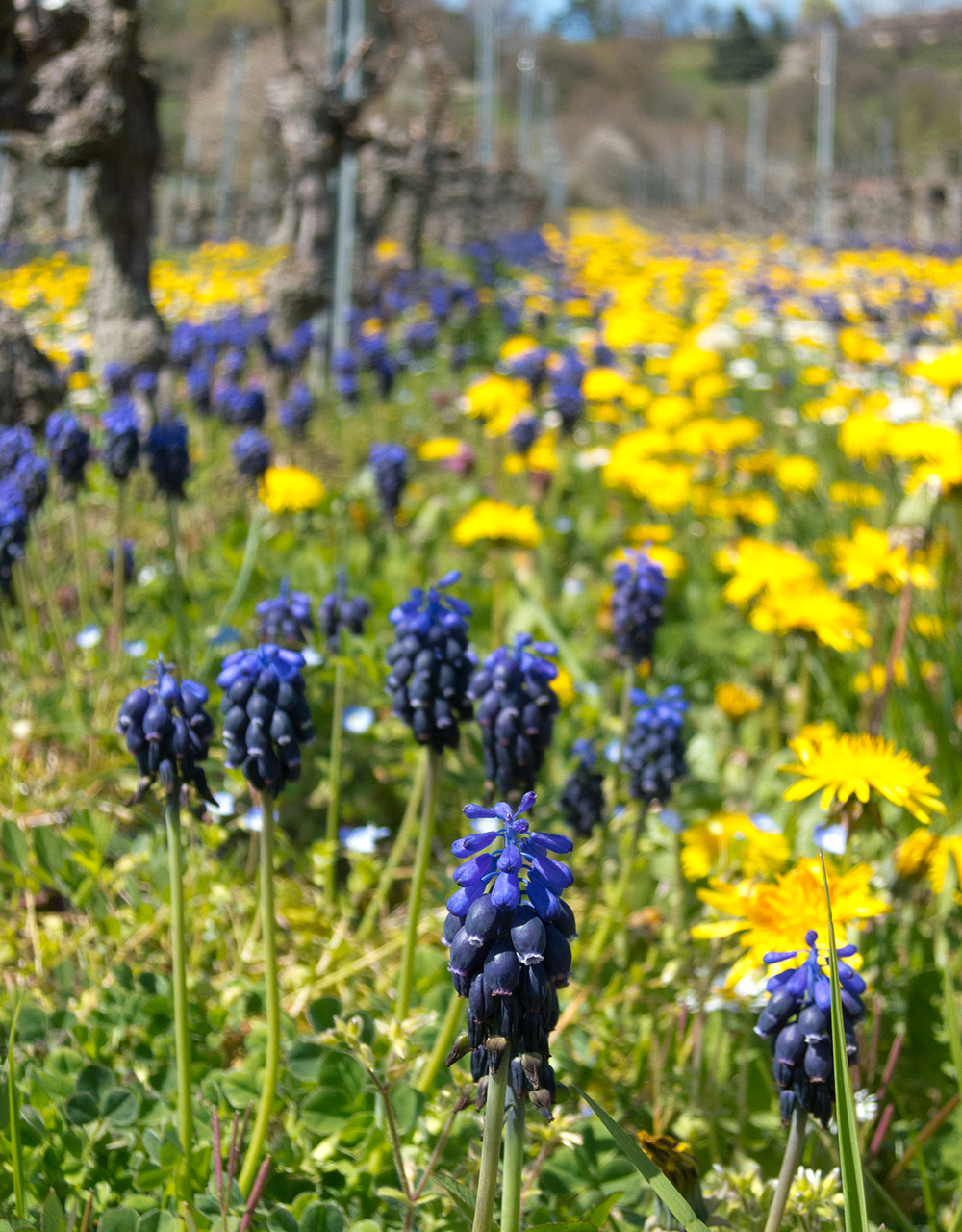
Abstract in open access
Root herbicides have been used for decades in viticulture. Currently, they are being replaced by less persistent foliar herbicides. Nevertheless, society questions even their limited use owing to the residues they leave and their negative effects on biodiversity. Agroscope and the Changins University of Applied Sciences are promoting research that proposes alternatives to herbicides in the management of vineyard flora, allowing wine growers to develop alternative methods.
Keywords:
E-Mail: aurelie.gfeller@agroscope.admin.ch
Adress: Agroscope, 1260 Changins/Nyon
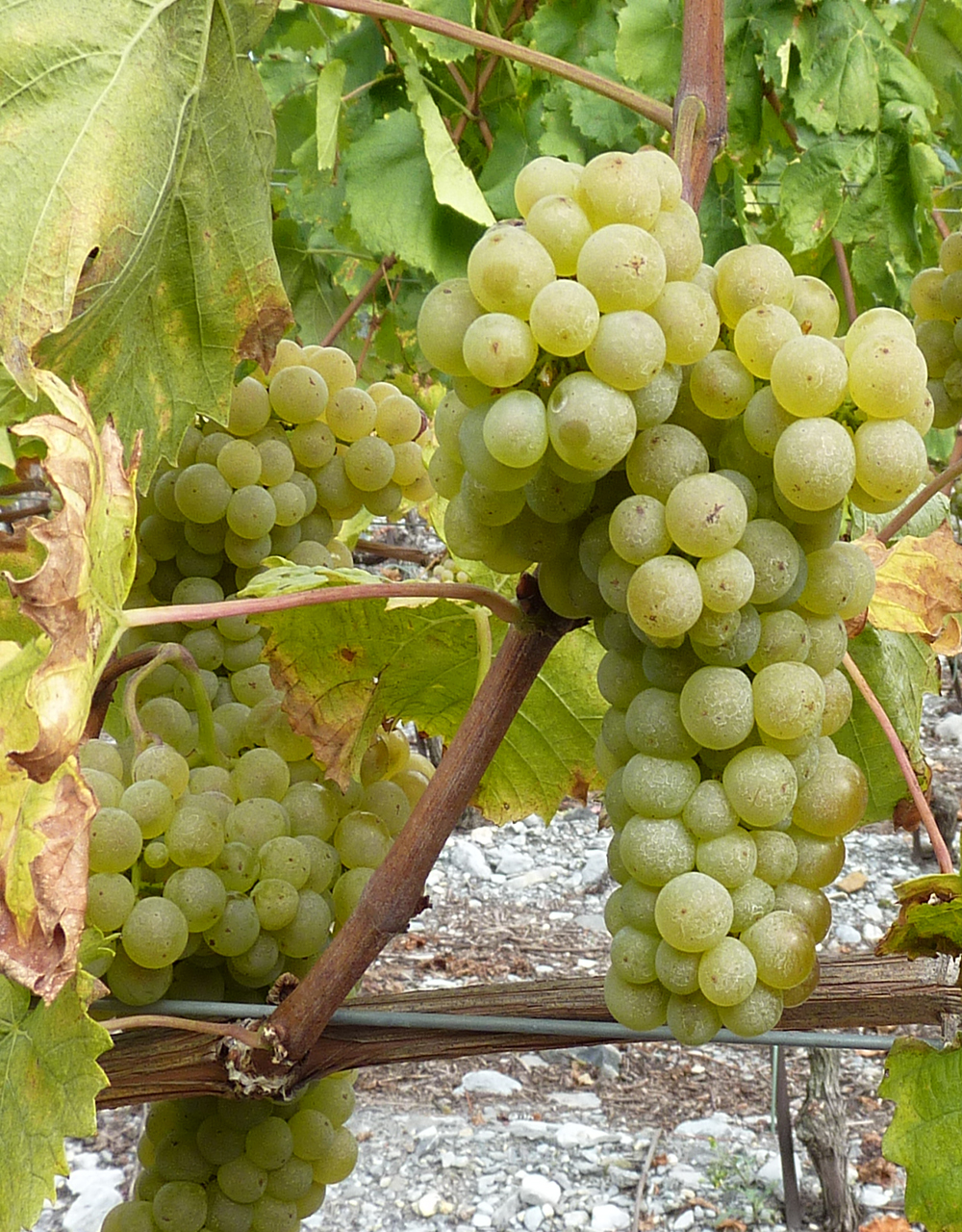
Abstract in open access
Swiss winegrowers have access to an extremely varied vine population encompassing numerous traditional and indigenous grape varieties. In order to preserve the clonal biodiversity of the most important varieties, Agroscope has been conducting studies on old vines since 1923 in partnership with the cantons. So far, 1700 clones of 23 different grape varieties have been added to the clone collection. Clones of particular agronomic and oenological interest have been bred on this basis. The 67 clones of 35 grape varieties as well as three rootstock clones are currently distributed by the Swiss certification system. The national ampelographic collection in Pully comprises over 600 accessions, and serves as a genetic basis for variety breeding, as a collection for the study of new introductions, and as a storage site for preserving rare and threatened varieties.
Keywords:
E-Mail: jean-laurent.spring @agroscope.admin.ch
Adress: Agroscope, 1009 Pully
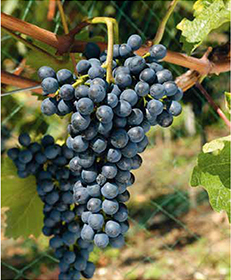
Abstract in open access
By developing grape varieties that are resistant to the main fungal diseases, the use of plant-protection products in viticulture can be considerably reduced. Since 1965, Agroscope has been developing new grape varieties that are resistant to Botrytis bunch rot (Botrytis cinerea), such as Gamaret. In 2018, these new resistant varieties occupied 915 ha in Swiss vineyards (accounting for 10% of the area planted with red-grape varieties). In 1996, a new programme for breeding varieties resistant to grapevine downy mildew (Plasmopara viticola) and powdery mildew (Erisyphe necator) was launched. In the first instance, resistance breeding was carried out using biochemical markers (stilbenes) synthesised by resistant genotypes in response to the aggression of pathogens (phytoalexins). Two grape varieties from this initial phase were approved: Divico (red) in 2013, and Divona (white) in 2018. Their resistance traits and oenological potential have met with great interest. In 2009, a collaborative venture was launched with the INRA in Colmar to breed varieties resistant to the main fungal diseases of the vine by combining different downy mildew- and powdery mildew-resistant genes from the breeding lines of both institutes. The aim is to obtain highly resistant varieties with long-lasting resistance to these pathogens. Initial candidates were established in France and Switzerland in 2018 to assess their agronomic and oenological suitability. Inclusion of the first joint Franco-Swiss acquisitions in the varieties catalogue is envisaged for 2024-2025.
Keywords:
E-Mail: jean-laurent.spring @agroscope.admin.ch
Adress: Agroscope, 1009 Pully
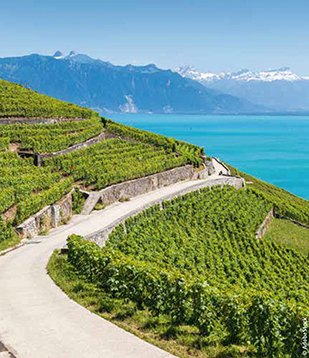
Abstract in open access
The most relevant indicators of vine water status are based on observation of the plant (vegetative growth, symptoms on leaves) and leaf water potential measurements using a Scholander pressure chamber. The latter technique allows us to estimate the force with which the crude sap is retained in the leaves. The sap under tension is directly linked to vine water supply levels, which depend on both soil water reserves and atmospheric evaporative demand. The water potential measurement therefore indicates vine water status and the intensity of the constraint. Using the pressure chamber at the vineyard is a simple and relatively quick process. Among other things, the pressure chamber is a decision-support tool for managing irrigation. The other physiological indicators such as carbon isotopic composition, dendrometry, foliar gas exchange measurement and sap flows are a matter for research. It should be noted that developing water-balance models still represents a challenge for vineyards on steep slopes.
Keywords:
E-Mail: vivian.zufferey@agroscope.admin.ch
Adress: Agroscope, 1009 Pully
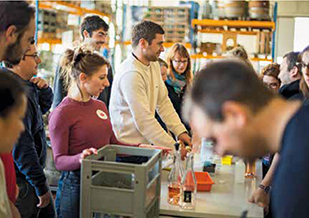
Abstract in open access
The acquisition and exchange of knowledge in the Swiss wine sector is based on research, education, dissemination, administration and professional organisations. This article presents the synergies that unite these various actors. The Swiss education in viticulture and enology professions and the role of the Ecole de Changins is a central pillar of this system. Supported among others by AGRIDEA, the Swiss dissemination center, the professional organisations grouped under the VITISWISS banner are also actively involved in the propagation of a sustainable wine-growing culture that is adapted to the challenges of the future.
Keywords:
E-Mail: conrad.briguet@changins.ch, philippe.droz@agridea.ch, christian.linder@agroscope.admin.ch
Adress: School of Engineering at Changins

 Download of full issue
Download of full issue
 Download article
Download article